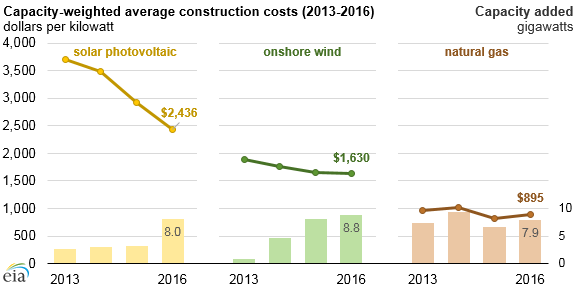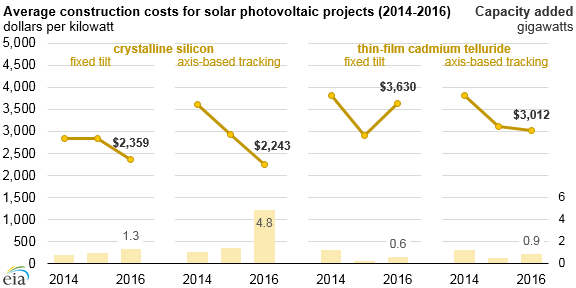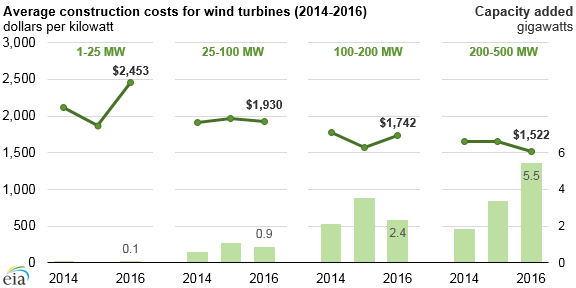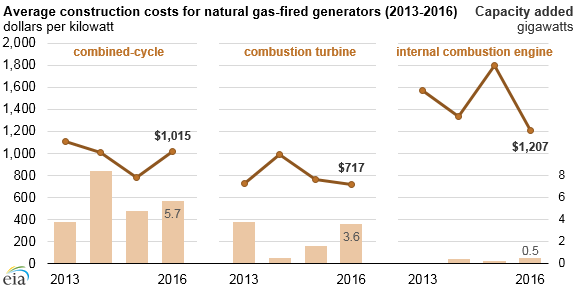

Solar PV systems vary by the type of panel used and whether the system uses tracking technology. In 2016, crystalline silicon solar PV systems with tracking were the most-added solar technology and the least expensive, at $2,243/kW.
Crystalline silicon has become the most widely used photovoltaic technology as the technology has matured and construction cost have dropped. Its installed costs declined $400-$500/kW per year to $1,000/kW lower than that of thin film as a result of demand and economies of scale.
Between 2013 and 2015, fixed-tilt mounting systems cost less than axis-based tracking systems, but in 2016, axis-based tracking systems cost less. This change was likely attributable in part to the typical system sizes associated with axis-based systems, because economies of scale allow larger axis-based tracking systems to have a lower capacity-weighted average cost than smaller fixed-tilt systems.
The effect of U.S. tariffs, approved in early 2018, on imported silicon solar cells and modules on future solar photovoltaic costs is unknown. Solar cells are the individual units or wafers that convert sunlight directly into electricity, and a collection of interconnected cells in a sealed package is referred to as a module or panel. Solar panels are installed in arrays, or rows of panels, that—along with other hardware such as an inverter—make up an installation.

Capacity-weighted costs tend to be lower for larger wind plants. In the past three years, most new wind capacity has been larger plants—89% of 2016 wind turbine additions were to sites with more than 100 megawatts. As the capacity added at a site increases, the capacity-weighted construction cost decreases because the siting and infrastructure costs are shared by more turbines and capacity.
Wind class—the wind speeds for which a wind turbine is optimized—can also affect wind generator costs; wind turbines designed for high- and medium-speed winds (classes 1 and 2) averaged about $100/kW more than turbines designed for low wind (class 3).

Even though combustion turbines have lower capital costs than combined-cycle systems, the improved efficiency of combined-cycle systems may make them more economically attractive. A total of 5.7 GW of combined-cycle capacity was added in 2016, despite capital costs nearly $300/kW higher than combustion turbines.
Principal contributor: Ray Chen

Follow us on social media: